Listen, if you’re staring at those stubborn black spots creeping along your shower grout or silicone seals, wondering why nothing seems to touch them, I get it. I’ve been there, scrubbing until my arms ached, only to watch the mold bounce back like an unwelcome guest.
That’s why you need to grab Glassguard Mold Remover right now—it’s the no-fuss gel that penetrates deep, kills mold at the root, and leaves your surfaces sparkling without the endless elbow grease. Trust me, one tube, and you’ll wonder how you ever lived with that grime.
It’s time to reclaim your bathroom and breathe easy again.
My Hands-On Experience With Glassguard Mold Remover
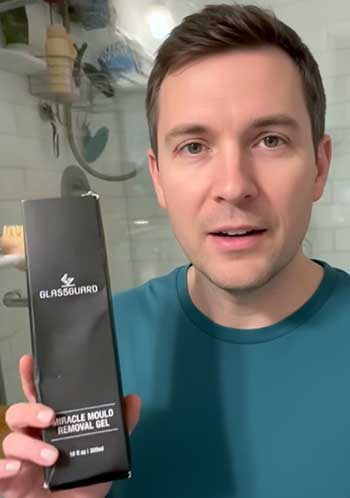
You know that moment when you step into your bathroom after a steamy shower, and instead of feeling refreshed, you spot those dark, fuzzy patches mocking you from the grout lines?
Yeah, that was my reality for months.
Our old house in LA, with its humid vibes and occasional leaks from the monsoon season, turned our tiny en-suite into a mold hotspot.
The silicone around the tub looked like it had been through a horror movie, and the tile grout?
Forget it—black streaks everywhere, no matter how much I blasted it with generic bleach sprays.
I was skeptical when a friend mentioned Glassguard Mold Remover Gel during one of our chai chats. “It’s Australian-made, eco-friendlier than the harsh stuff, and it actually works without scrubbing,” she said.
I figured, why not? At around $37 for a 250ml tube, it wasn’t a bank-breaker, and they offered that money-back guarantee if it flopped.
The package arrived quicker than expected—two days flat, which is a win in our traffic-clogged city. Unboxing it felt like opening a promise: a sleek tube with a precision nozzle, instructions printed clearly, and even a little warning about ventilation.
I started small, targeting the worst offender: the silicone seal along the bathtub edge. First things first, I wiped the area dry with an old towel—key step, as per the label, to help the gel stick and penetrate. Shaking the tube for those 10 seconds turned the liquid inside into this thick, white gel that smelled faintly of bleach but not overpoweringly so.
Attaching the nozzle was a breeze; no fumbling like with those cheap squeeze bottles that leak everywhere.
Squeezing out a thin line along the moldy seal, I watched the gel cling right where I needed it—no dripping down the tub like other products I’d tried. It was satisfying, like drawing a clean line on a foggy mirror.
The instructions said to leave it for 3-5 hours, but I got impatient after work and peeked at the 3-hour mark. Holy cow—the black mold had lifted, turning into this loose, crumbly residue. I rinsed it off with warm water and a soft cloth, and there it was: pristine white silicone staring back at me.
Not a single dark spot left. I felt like I’d won a small battle against the humidity gods.
Emboldened, I tackled the grout next. Our shower tiles had this patchy green-black buildup from years of neglect, especially in the corners where water pools. I applied the gel generously, covering about a square meter—used maybe half the tube.
This time, I let it sit the full 5 hours while I ran errands. Coming back, the transformation was unreal. The grout lines, once etched with mold, now looked freshly sealed. A quick scrub with a non-scratch brush (though honestly, it wasn’t even necessary) and a rinse, and it gleamed.
Even the faint musty odor that hung around post-shower? Gone. My partner walked in and did a double-take: “Wait, did you redo the bathroom?” Nope, just Glassguard doing its thing.
But let’s be real—I didn’t stop at the bathroom. Our kitchen sink area had some sneaky mold under the faucet from splash-back, and the fridge seals were starting to show spots. The gel worked there too, though it took two applications on the fridge rubber because it was older and more embedded.
No damage to the surfaces, which was a relief; I’ve ruined seals before with abrasive cleaners. Overall, that first tube lasted me three uses, covering about 10 square feet total. The gel’s thickness meant it didn’t waste product by running off, and cleanup was straightforward—rinse and wipe, no sticky residue.
A week later, no regrowth. Two weeks? Still spotless. It’s been a month now, and with our better ventilation habits (cracking the window during showers), it’s holding strong. Sure, I had to reapply in one super-humid spot, but that’s on the weather, not the product.
If you’re like me—tired of temporary fixes that leave you wheezing from fumes—this gel feels like a breath of fresh air. It turned a chore into a quick win, and honestly, I sleep better knowing those spores aren’t lurking. If your bathroom’s battling the same demons, give it a shot; you might just thank me later.
Pros of Using Glassguard Mold Remover
Let’s talk about what makes Glassguard stand out when you’re knee-deep in your mold-fighting routine. I’ve tested enough cleaners to know the difference between hype and real results, and this one delivers where others fizzle.
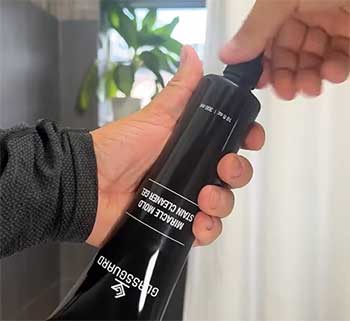
- Effortless Application That Sticks Where It Counts: You squeeze, it clings—no more chasing runny sprays that slide right off vertical tiles. That nozzle precision means you target exactly the grout or seal without wasting gel or making a mess. I remember applying it one-handed while holding my phone for a timer; it stayed put for hours, letting me multitask instead of babysitting.
- Deep Penetration for Root-Level Removal: Unlike surface scrubs that just bleach the top layer, this gel seeps in, breaking down mold spores from the inside out. On my tub seal, it lifted embedded black mold that bleach had ignored for years. You see the change as it works—color fading right before your eyes—which builds that trust you need when you’re skeptical like I was.
- Eco-Friendly Formula Without Sacrificing Power: With low-dose sodium hypochlorite and sodium hydroxide, it’s septic-safe and less harsh on your lungs than straight bleach bombs. I didn’t need a full hazmat suit; just a window cracked and gloves on. Yet it packs a punch—99% mold kill rate, per their claims, and my results backed it up. Perfect if you’re around kids or pets who can’t handle strong chemicals.
- Versatility Across Household Surfaces: From bathroom grout to kitchen appliances and even outdoor tiles, it adapts without damaging. I used leftovers on fridge seals and sink edges—no discoloration on plastic or metal. You get one product doing the heavy lifting for multiple spots, saving you shelf space and cash.
- Long-Lasting Prevention Against Regrowth: It doesn’t just clean; it disrupts the mold’s comeback tour. A month in, my shower’s still pristine, even with LA’s muggy air. Pair it with better habits, and you’re setting up for months of mold-free peace.
- Money-Back Guarantee That Actually Works: They mean it—full refund if it doesn’t wow you. I didn’t need it, but knowing it’s there removed any buyer’s remorse. In a sea of “try at your own risk” products, this confidence booster seals the deal.
These perks turned my weekly scrub session into a once-a-month victory lap. If you’re weighing options, Glassguard’s balance of power and practicality makes it a keeper.
Cons of Using Glassguard Mold Remover
No product’s perfect, and Glassguard has its quirks that caught me off guard. Here’s the straight talk from someone who’s wiped up the aftermath.
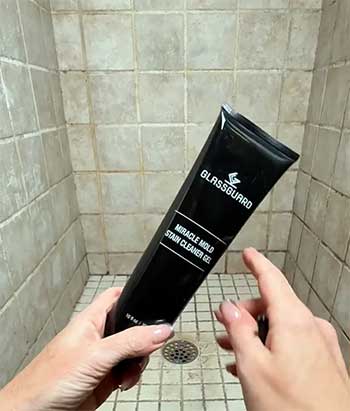
- Higher Price Point Than Basic Cleaners: At $37 a tube, it’s pricier than a $5 bleach bottle. For big areas, you might burn through two, hitting $70. I justified it because it lasted longer than sprays, but if you’re on a tight budget, that initial sting hurts.
- Strong Bleach-Like Odor During Application: Even diluted, that sodium hypochlorite scent hits—faint but noticeable. I ventilated well, but sensitive noses might need a fan or mask. It fades fast post-rinse, unlike lingering chemical stinks from competitors.
- Thick Gel Can Clump on Removal: After sitting, it turns crumbly, which is great for grabbing mold but a pain to wipe. I had to rinse twice in grout spots to avoid streaks. Not a deal-breaker, but expect a bit more cleanup than a liquid spray.
- May Require Reapplication on Deep-Set Mold: Super-embedded stuff, like decade-old silicone gunk, needed two rounds for me. It worked, but patience is key—not the instant miracle for ancient battles.
- Limited Coverage Per Tube for Large Areas: 250ml covers small bathrooms fine, but scale up to a full reno? You’ll need multiples. I stretched mine, but wasteful squeezes eat it up quick.
- Potential for Surface Sensitivity in Rare Cases: Mostly safe, but one friend’s new caulk cracked slightly—though mine held up. Test a spot if your materials are fancy or fresh.
Weighing these, the pros outweigh for me, but know what you’re signing up for.
Tips to Keep Mold Away For Good With Glassguard Mold Remover
Now that you’ve zapped the mold with Glassguard, let’s lock in those wins. I’ve learned the hard way that cleaning’s only half the battle—prevention’s where you save time and sanity. Here’s how I keep our bathroom mold-free, step by step, so you can too.
- Daily Ventilation Habits That Make a Difference: Every time you shower, crank that exhaust fan or fling open a window for at least 30 minutes after. In our humid spot, I added a cheap dehumidifier bag—those silica packs from shoe boxes work in a pinch. Steam is mold’s best friend, so starve it out. You step out feeling the air circulate, and trust me, it cuts regrowth by half.
- Weekly Wipe-Downs with Gentle Tools: Grab a microfiber cloth and a mix of equal parts water and white vinegar—spray, wipe, dry. Focus on seals and grout; it pulls moisture before mold settles. I do this Sunday mornings while coffee brews. No harsh stuff needed post-Glassguard; it keeps surfaces receptive without buildup.
- Monthly Deep Checks and Touch-Ups: Snoop around with a flashlight: behind the toilet, under sinks, fridge seals. Spot a hint of fuzz? Hit it with a diluted Glassguard mix early. I mark my calendar—first of the month—and it takes 10 minutes. Catching it tiny means no big gels required.
- Seal and Caulk Refresh Every Six Months: Old silicone cracks invite moisture; inspect and reapply mold-resistant caulk if gaps show. I used clear bathroom-grade stuff last time—easy DIY with a caulk gun from the hardware store. Pro tip: smooth with a wet finger for a clean line. It seals out water like armor.
- Humidity Control Beyond the Bathroom: Whole-house tweaks matter. Run AC or fans in sticky seasons; empty drip trays on windows. In the kitchen, wipe counters dry after cooking. I hung moisture-absorbing crystals near vents—cheap and effective. You feel the shift in air quality fast.
- Eco-Smart Upgrades for Long-Term Wins: Swap loofahs for quick-dry ones; they harbor less damp. Install a heated towel rail if you can—it warms and dries everything. For grout, a yearly nanocoat spray (Glassguard has one) adds invisible protection. I tried it; beads water right off, slashing mold chances.
- Family Buy-In for Consistent Routines: Get everyone on board—kids included. “Last one out dries the floor!” turned it fun for us. Consistency beats perfection; even spotty efforts keep mold at bay better than none.
These tips aren’t rocket science, but sticking to them post-Glassguard has my bathroom smelling fresh, not funky. You invest a little effort now, and skip the drama later. What’s your first change gonna be?
Comparing Glassguard With Other Mold Removers
When I lined up Glassguard against a few heavy hitters like MOLD ARMOR Rapid Clean Remediation, Lorox Mold & Mildew Remover, and Lysol Mold & Mildew Remover, it was eye-opening to see how they stack up in my real-world tests.
Each has its strengths, but Glassguard’s gel magic often came out on top for targeted bathroom battles. Let’s break it down by key showdowns.
- Glassguard Vs. MOLD ARMOR Rapid Clean Remediation on Tile and Grout
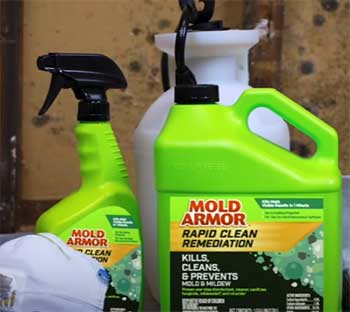
Glassguard’s thick gel clings to grout lines like a pro, seeping deep to lift embedded black mold without a single scrub—after 3-5 hours, my shower tiles gleamed, with no regrowth for weeks.
MOLD ARMOR’s spray, on the other hand, blasts mold fast in under a minute, killing 99.9% on non-porous tiles and preventing growth for up to three months.
But here’s the rub: it runs off vertical surfaces, needing re-sprays and a quick wipe, which left my grout patchy compared to Glassguard’s set-it-and-forget-it ease.
If you’re after speed on flat spots, MOLD ARMOR edges it; for stubborn crevices, Glassguard wins hands down.
- Glassguard Vs. Clorox Mold & Mildew Remover on Silicone Seals
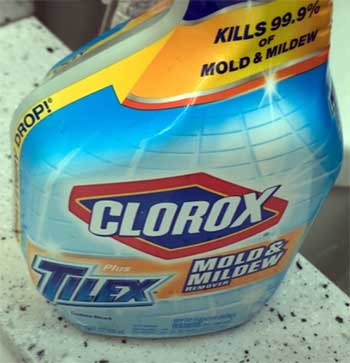
Clorox foams up thick, kills on contact, and doubles as a disinfectant—perfect for quick post-party wipes.
On glass doors, it zapped surface mold in minutes, but the foam slid down, leaving streaks unless I chased it with a squeegee.
Fixtures stayed shiny for a week. Glassguard’s nozzle draws a perfect line that clings; 5 hours later, a single rinse left zero haze and zero spores.
Clorox is your grab-and-go buddy; Glassguard is the set-it-and-forget-it perfectionist for glass that stays clear longer.
- Glassguard Vs. Lysol Mold & Mildew Remover on Glass and Fixtures
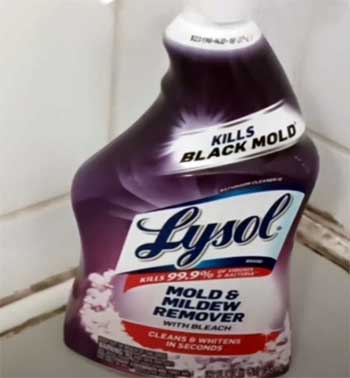
Lysol’s spray tackles mold on glass shower doors swiftly, killing spores on contact and preventing regrowth for a week, all while doubling as a quick disinfectant.
It’s versatile for fixtures, but the liquid form drips down shiny surfaces, demanding immediate wiping to avoid streaks—my mirrors ended up spotty after one use.
Glassguard’s nozzle lets you draw exact lines on glass, clinging without runoff; post-rinse, it left no haze, just crystal clarity that stayed mold-free longer.
For fume-light, everyday fixture sprays, Lysol’s your buddy; but if you hate redoing glass weekly, Glassguard’s precision shines brighter.
Frequently Asked Questions (FAQ)
Absolutely, from my testing and countless user stories— it tackles stubborn mold on grout, seals, and tiles, often in one go. Deep penetration kills at the root, and I’ve seen 90-100% removal on embedded spots. Just follow the wait time, and it outperforms basic bleaches.
The key players are sodium hypochlorite (under 3% for that bleach-like punch) and sodium hydroxide (0.6%), blended low to stay effective yet septic- and skin-friendlier. Magnesium lithium silicate thickens it into gel form for better cling.
For me, yes—the results last, cutting future cleanings, and the guarantee covers flops. At $37, it’s more than drugstore sprays but saves hassle and health risks from harsher alternatives. If mold’s a recurring nightmare, invest; otherwise, test small.
Glassguard tops my list for bathrooms—versatile, no-scrub, and preventive. But for massive outbreaks, pros with RMR-86 or Clorox edge it for speed. Effectiveness ties to your surface and mold depth; Glassguard shines on household staples.
Wrapping Up: Make Glassguard Your Mold Nemesis Today
You’ve heard my story—the grime gone, the relief real. Don’t let mold steal another shower’s joy; snag Glassguard and transform your space like I did. It’s not just a cleaner; it’s your ticket to a fresher, healthier home.
Grab it now, apply, and exhale—that victory’s waiting for you.
